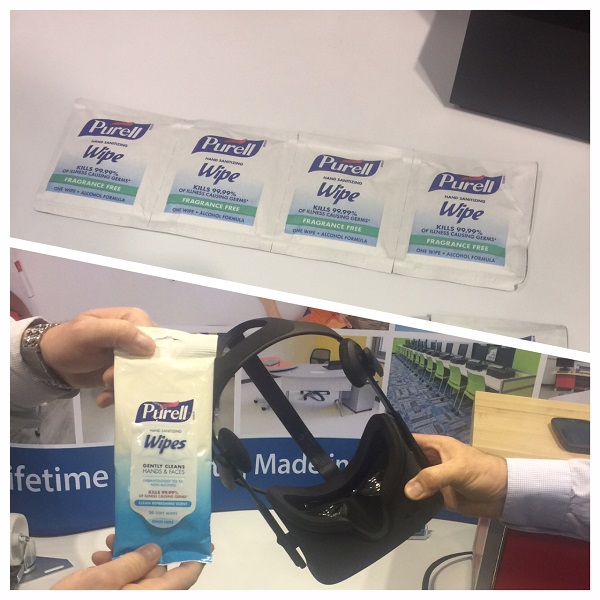The US ed tech conference season kicks off at the start of the year with a strong event, the Future of Education Technology Conference, held each year in Orlando, Florida. FETC always sets the tone for the year, previewing what’s up and coming for educational technology in the U.S. market. Now in its 37th year, here is how the VR meme took form at FETC 2018.
The Landscape. Virtual Reality was well represented throughout the conference: in a keynote session, multiple conference and poster sessions, and in the bustling exhibit hall. Still, I was left with the faint impression of a slight tick downwards from last year.
The Stalwarts. Over the years at FETC, 3D and VR companies may come and go. Some high-visibility stalwarts remain constant: AVRover, NearPod, Google Expeditions (not exhibiting directly, but represented by its army of minions), ViziTech, and zSpace (featuring a creative escape room approach) held their formation.
The bus experience in the walk-in zSpace booth at FETC 2018
The Bundlers. It looks like bundling was the ‘in’ thing to see this time. Best Buy offered their turnkey VR solution (cart-goggles-content), as did Gravity Gaming, which smartly bundled onsite training with their solution. But the most interesting bundler was Lenovo, offering their “Lenovo VR Classroom” turnkey solution, which included their OEM Mirage Solo headsets (based on DayDream OS and Rigel controllers), 10” teacher tablet, classroom router, mobile storage cart, and packaged content. The “VR Classroom” solution was flexibly available in 3, 10, and 24 student options.
Lenovo’s Mirage Solo headset, part of their new “Lenovo VR Classroom” solution
The Innovators. One surprise exhibitor offering something new was GeniusPlaza. Genius Plaza is an education platform with a strong foundation of resources in math and language arts instruction. Touted as a “multicultural education platform built for diverse communities and underserved populations”, Genius Plaza rolled out a 360 VR-supported career awareness curriculum. GeniusPlaza both creates and curates immersive learning experiences featuring ‘Champions’ in STEAM professions. Students are introduced to champions in various career fields, and are then given the opportunity to do walkthroughs, using VR, in each respective workplace. Their content is available in both English and Spanish. It’s original.
HP’s VR-to-go, backpack style
HP was also teasing educators with their new mobile backpack VR solution, but that’s the subject of a deep dive in another article this month, as is a school furniture exhibitor with an extreme VR twist.
The remaining ‘innovator’ recognition has to humbly recognize two presentations—one on teaching strategies for virtual reality and the other on why VR makes some people sick—both of which I led in conference sessions on successive days,and both with some significant personal impact on attendees.
My poster session on why VR can make some people uncomfortable, with inset picture of diagnosing an educator with a “pirate string.”
The Unspoken. Making a special appearance in multiple locations at this year’s conference was….wait for it…the antiseptic wipe. Exhibitors everywhere are finally are getting wise to the issue of wiping down headgear after each use.
 Wipes were everywhere this time
Wipes were everywhere this time
The Enlightened. If you are interesting in the gathering research on VR in education, definitely check out Foundry10’s online compendium. Another development of special interest to me emerging from FETC is what I am now calling the impending AR/MR/VR rigor movement. The clouds are gathering; the weather is leaning toward a change—VR must be used more effectively in schools and universities if it is to survive the long haul. Educational rigor must replace the ‘wow’ factor, and it must happen very soon. Raising the ‘quality’ ante for effective VR use is the subject of a deep-dive article I am tackling next month. Right here. Stay tuned.
In conclusion, virtual reality had a strong and fresh presence at FETC 2018. Still, with the exceptions of the innovators and enlighteners above, most of what I saw and experienced was only an inch deep. Gadget oriented. Shiny-object syndrome. Ho-hum. Been there, done that. But as I mentioned earlier, the winds are changing, as the rigor movement is soon to collide with virtual reality as bandwagon.—Len Scrogan

